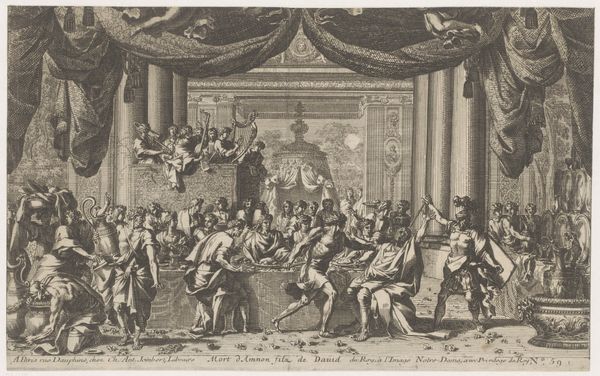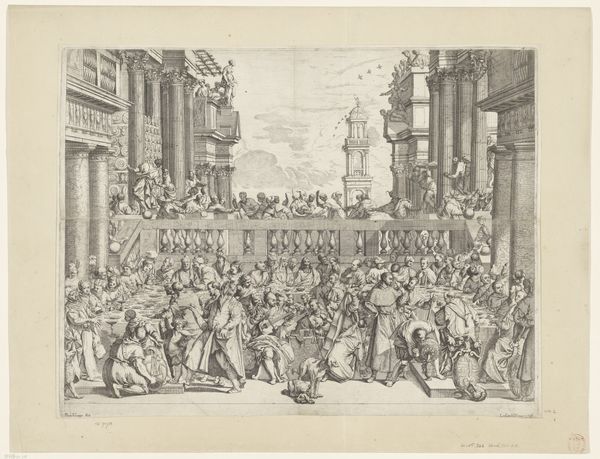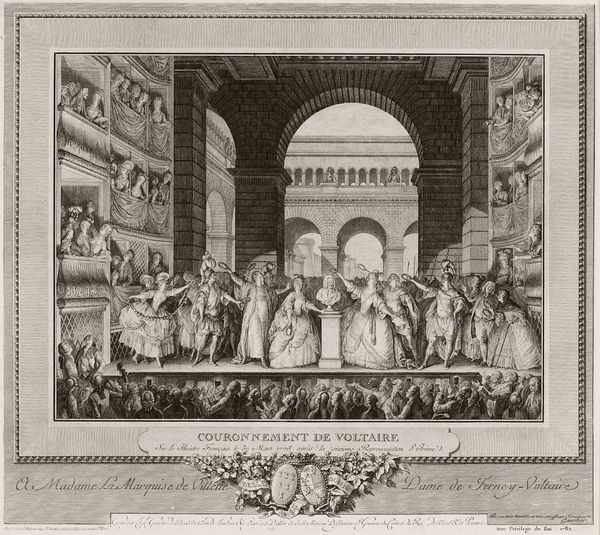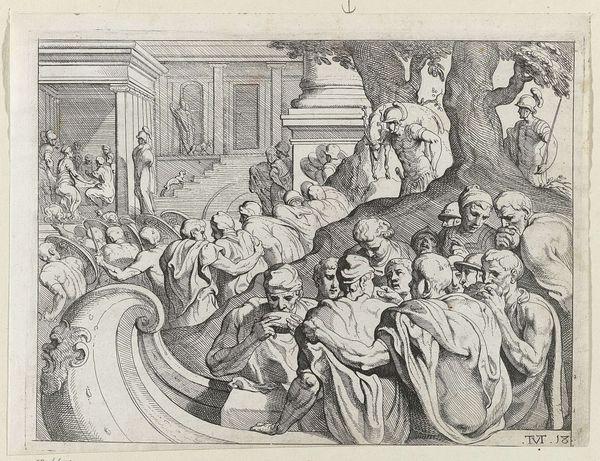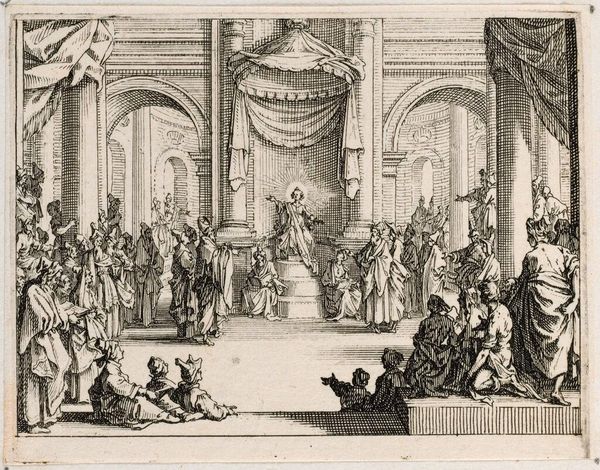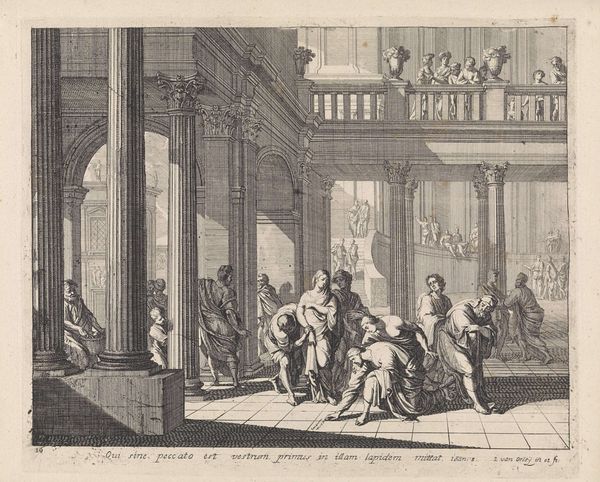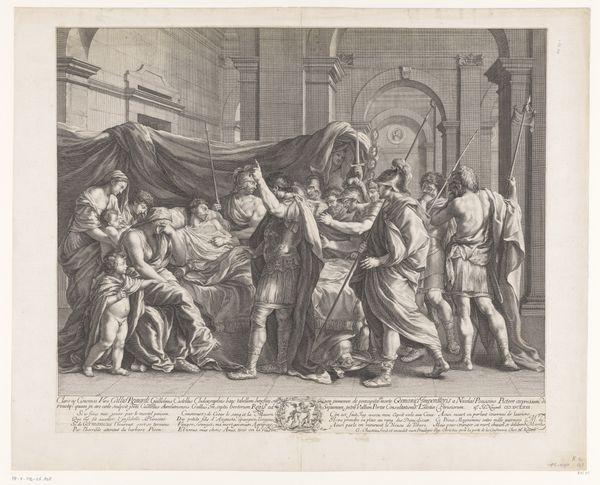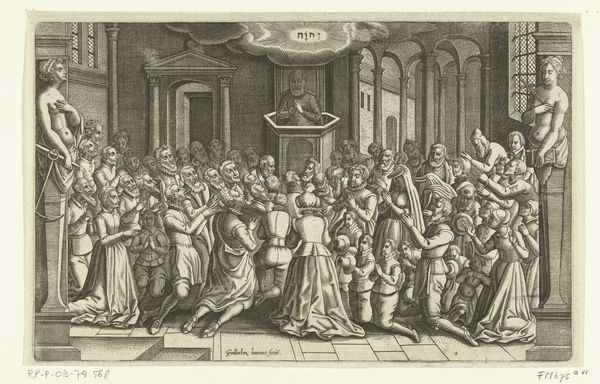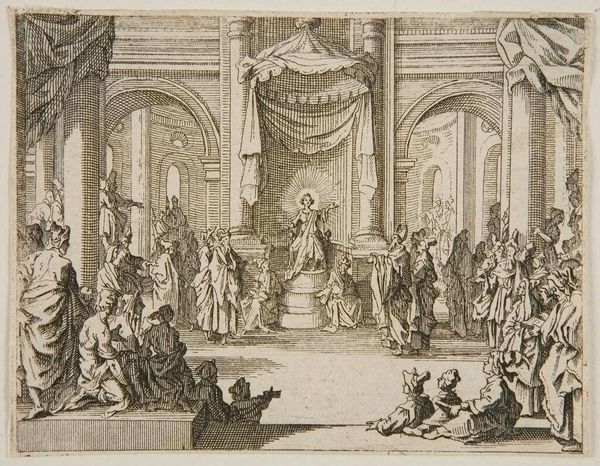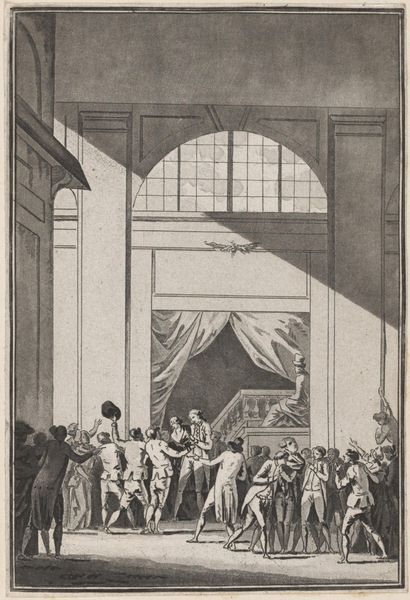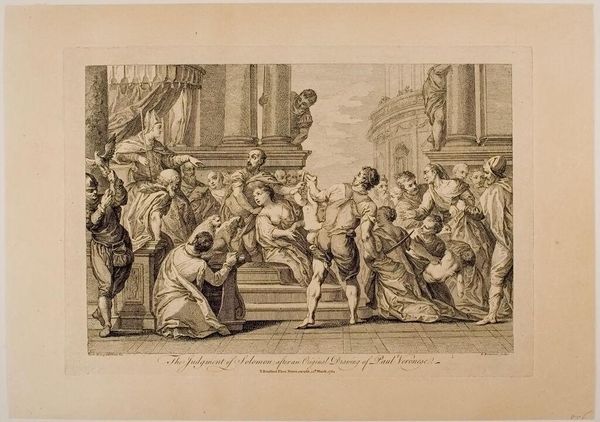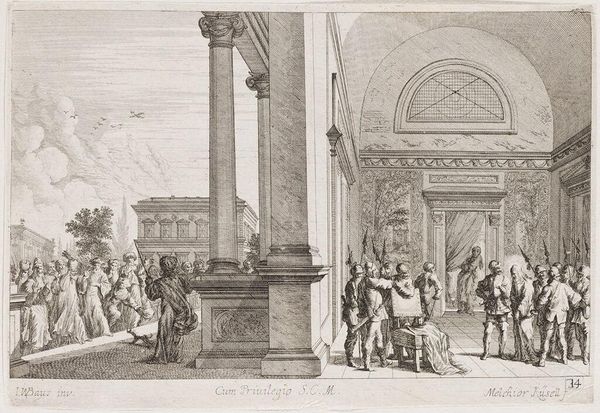
drawing, print, etching, paper, engraving
#
portrait
#
drawing
#
neoclacissism
# print
#
etching
#
figuration
#
paper
#
france
#
history-painting
#
academic-art
#
engraving
Dimensions: 177 × 235 mm (image); 207 × 237 mm (sheet)
Copyright: Public Domain
Editor: Here we have "Crowning of Voltaire," an etching and engraving on paper by Charles-Étienne Gaucher, made between 1778 and 1782. It's wonderfully detailed. The scene seems to take place within a grand theatre, with figures presenting a wreath to a bust of Voltaire. I’m curious; what stands out to you about this piece? Curator: The historical context is key. This print depicts a real event: Voltaire’s return to Paris and the staging of his play, "Irène." Consider the theatre itself. It wasn't just entertainment, it was a place where social and political ideas were performed and debated. Who do you think the audience members represent? Editor: It looks like society's elite. Aristocrats in boxes, eager attendees in the main hall. There are a lot of them. The space looks very crowded and very fancy. It almost feels propagandistic. Curator: Exactly. The print serves as visual propaganda. Voltaire, a controversial figure, is being celebrated, essentially canonized. This image promotes the Enlightenment values he championed: reason, liberty, and tolerance. But isn’t it also interesting to consider the institution that enshrines him – the theatre, but also the print itself? It frames his genius and disseminates it broadly. Editor: It's almost like a form of celebrity endorsement but for ideas. So, it makes me wonder about who this was intended for, if it’s trying to promote Voltaire as this Enlightenment ideal? Curator: Precisely! Prints like these were relatively affordable. They helped spread the ideals of the Enlightenment beyond the aristocratic elites, influencing the rising middle class and fueling social and political change. This image transforms Voltaire into an accessible icon. Editor: I hadn’t considered the accessibility factor before. It's fascinating how the art form itself is used as a tool to shape public opinion and perpetuate those ideals. Thanks, that has helped me see so much more in the work.
Comments
No comments
Be the first to comment and join the conversation on the ultimate creative platform.
